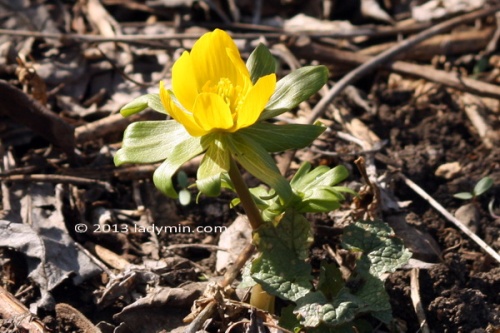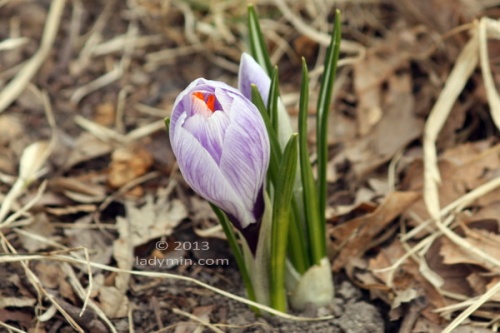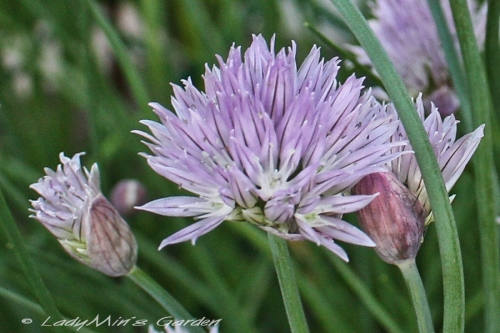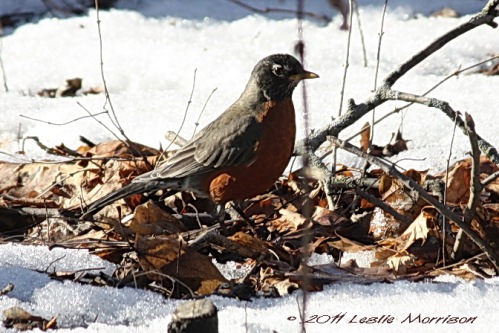A review from my book blog that I thought would be of interest to both gardeners and bird lovers.
 Gardening for the Birds
Gardening for the Birds
How to Create a Bird Friendly Backyard
by George Adams
Genre: Gardening
Publisher: Timber Press
Publish Date: June 25, 2013
Format: Paperback | 444 pages
Rating: 5 of 5
From the Introduction:
By establishing a bird-friendly ecosystem around your home, arresting color, birdsong, and antics of our native birds will add to the splendor of native trees, shrubs, and wildflowers to create a spiritually uplifting garden environment.
Creating a native landscape
Several years ago I began adding more native perennial plants to my garden in an effort to save myself some work and at the same time help the environment. Native plants require a lot less maintenance than non-native species. Once established many are drought-resistant and need little watering, fertilizing or pest control. As a bonus, many are distasteful to the local bunnies who would feast on the garden center annuals I had been planting. I have never seen a bunny try to eat a coneflower but they would devour my petunias.
Last year I began ripping out sections of the front lawn and replacing it with wildflowers such as Coneflower, Joe Pye Weed, Blazing Star and Spider Wort, and small shrubs that flower or make berries such as Viburnum, Dogwood and Butterfly Bush. As I chose new plants I would research whether or not they would make seeds or berries that birds would eat. My efforts have already made a difference in the variety of birds that visit my yard.
Attract birds to your own yard
Which brings me to this new book from Timber Press, Gardening for the Birds, a wonderful resource that has everything one needs to know to create a bird friendly environment, all in one volume.
The book is divided into four sections:
• Planning for the food, water, shelter and nesting sites the birds need
• Designing for your region
• A plant directory
• A bird directory
Do as much or as little as you want to create your bird friendly space. Whether you want to create a tiny oasis with only a birdbath and a few plants, attract a few favorite birds, or landscape a large area and create a bird sanctuary, this book is a wealth of information. You don’t need to be a master gardener or have a green thumb to be successful.
In the first two parts we learn about providing food, water, shelter and nesting sites for the birds you hope to attract. There are loads of photos, charts and designs to assist the reader in creating their garden and learning about the habits of the birds who will use it.
Emphasis is placed on choosing native plants as they are the cornerstone of successfully attracting birds. These plants are already adapted to the area and attract local insects which are in turn eaten by the local birds. Since the native birds evolved with the plants, their color is often an effective camouflage and shelter. An American Goldfinch hiding in Tall Yellow Coneflower can barely be seen.The third part of the book is an extensive plant directory including full-color photos of the plants and the birds that inhabit them. It is arranged alphabetically by botanical name and includes the common name, a general description of the plant and the birds that are attracted to it. Different species are listed along with cultivation tips and hardiness zones.
And finally the last sections is a guide to the birds most likely to visit North American gardens. There is an introduction to each bird plus information on behavior, nesting habits, feeding habits and the types of plants the bird uses for food and shelter. Photos and sketches of each bird are included along with a range map.
Gardening for the Birds is a treasure trove of information and handy reference guide to be referred to again and again. With this book you can’t help but design a bird friendly yard.
——————————–
Source: Review copy provided by NetGalley and Timber Press
© 2013 Under My Apple Tree. All rights reserved.









 I’m voting for the eggplant. This is probably the most challenging of the three seeds. The growing season in Chicago is not long enough to sow eggplant seeds directly into the ground so they must be started indoors and moved to the garden after the danger of frost has passed. They can also be grown in a container on a patio or balcony. Radishes are too easy and I’ve successfully grown swiss chard many times, so eggplant is my choice for 2011.
I’m voting for the eggplant. This is probably the most challenging of the three seeds. The growing season in Chicago is not long enough to sow eggplant seeds directly into the ground so they must be started indoors and moved to the garden after the danger of frost has passed. They can also be grown in a container on a patio or balcony. Radishes are too easy and I’ve successfully grown swiss chard many times, so eggplant is my choice for 2011. 




